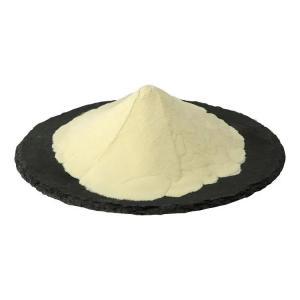News list
News Center
Hot Product
News
Phosphatidylserine’s effects on synaptic plasticity.
Time:2024-12-27
Synaptic plasticity, the ability of synapses to strengthen or weaken over time in response to activity levels, is a cornerstone of learning and memory. The phospholipid phosphatidylserine (PS), a key component of cell membranes, has drawn significant attention for its potential role in supporting cognitive health. In this article, we explore the mechanisms through which phosphatidylserine influences synaptic plasticity and its implications for brain function.
The Role of Phosphatidylserine in Brain Health
Phosphatidylserine is highly concentrated in the brain, comprising a significant portion of neuronal membranes. Its unique structural properties help maintain membrane fluidity, which is crucial for signal transduction, vesicle trafficking, and receptor function. Additionally, PS is known to facilitate the activity of key proteins involved in neurotransmission and neuronal survival.
Phosphatidylserine and Synaptic Function
Neurotransmitter Release and Uptake
Phosphatidylserine enhances synaptic function by regulating neurotransmitter release. It aids in vesicle fusion with the presynaptic membrane, ensuring efficient communication between neurons. Furthermore, PS contributes to the recycling of synaptic vesicles, maintaining the readiness of synapses for successive signaling events.
Receptor Modulation
PS interacts with glutamate and GABA receptors, two major players in excitatory and inhibitory signaling. By modulating receptor dynamics, PS ensures a balanced neural response, critical for the processes of long-term potentiation (LTP) and long-term depression (LTD), the cellular basis of learning and memory.
Calcium Homeostasis
Calcium signaling is essential for synaptic plasticity, and PS plays a role in maintaining intracellular calcium levels. This regulation supports synaptic strength and plastic changes by activating calcium-dependent enzymes such as protein kinases and phosphatases.
Phosphatidylserine and Cognitive Function
Several studies have highlighted the cognitive benefits of PS supplementation, particularly in aging populations. By promoting synaptic integrity, PS improves memory, attention, and executive function. Animal models also demonstrate its ability to enhance LTP, a critical mechanism for memory consolidation.
Potential Therapeutic Applications
Age-Related Cognitive Decline
As natural levels of phosphatidylserine decline with age, supplementation may help counteract synaptic deterioration, supporting memory and cognitive performance in older adults.
Neurological Disorders
Phosphatidylserine shows promise in managing conditions like Alzheimer’s disease, Parkinson’s disease, and depression. By stabilizing synaptic networks and reducing inflammation, PS could mitigate the progression of these disorders.
Neurodevelopmental Disorders
Emerging research suggests that PS may aid in conditions like ADHD and autism spectrum disorder by enhancing synaptic communication and improving cognitive outcomes.
Conclusion
Phosphatidylserine plays a pivotal role in synaptic plasticity through its influence on neurotransmitter dynamics, receptor modulation, and calcium signaling. Its contributions to cognitive health and potential therapeutic benefits make it a valuable area of research. Future studies should aim to further elucidate its mechanisms of action and optimize its use in clinical interventions for neurological and cognitive disorders.
The Role of Phosphatidylserine in Brain Health
Phosphatidylserine is highly concentrated in the brain, comprising a significant portion of neuronal membranes. Its unique structural properties help maintain membrane fluidity, which is crucial for signal transduction, vesicle trafficking, and receptor function. Additionally, PS is known to facilitate the activity of key proteins involved in neurotransmission and neuronal survival.
Phosphatidylserine and Synaptic Function
Neurotransmitter Release and Uptake
Phosphatidylserine enhances synaptic function by regulating neurotransmitter release. It aids in vesicle fusion with the presynaptic membrane, ensuring efficient communication between neurons. Furthermore, PS contributes to the recycling of synaptic vesicles, maintaining the readiness of synapses for successive signaling events.
Receptor Modulation
PS interacts with glutamate and GABA receptors, two major players in excitatory and inhibitory signaling. By modulating receptor dynamics, PS ensures a balanced neural response, critical for the processes of long-term potentiation (LTP) and long-term depression (LTD), the cellular basis of learning and memory.
Calcium Homeostasis
Calcium signaling is essential for synaptic plasticity, and PS plays a role in maintaining intracellular calcium levels. This regulation supports synaptic strength and plastic changes by activating calcium-dependent enzymes such as protein kinases and phosphatases.
Phosphatidylserine and Cognitive Function
Several studies have highlighted the cognitive benefits of PS supplementation, particularly in aging populations. By promoting synaptic integrity, PS improves memory, attention, and executive function. Animal models also demonstrate its ability to enhance LTP, a critical mechanism for memory consolidation.
Potential Therapeutic Applications
Age-Related Cognitive Decline
As natural levels of phosphatidylserine decline with age, supplementation may help counteract synaptic deterioration, supporting memory and cognitive performance in older adults.
Neurological Disorders
Phosphatidylserine shows promise in managing conditions like Alzheimer’s disease, Parkinson’s disease, and depression. By stabilizing synaptic networks and reducing inflammation, PS could mitigate the progression of these disorders.
Neurodevelopmental Disorders
Emerging research suggests that PS may aid in conditions like ADHD and autism spectrum disorder by enhancing synaptic communication and improving cognitive outcomes.
Conclusion
Phosphatidylserine plays a pivotal role in synaptic plasticity through its influence on neurotransmitter dynamics, receptor modulation, and calcium signaling. Its contributions to cognitive health and potential therapeutic benefits make it a valuable area of research. Future studies should aim to further elucidate its mechanisms of action and optimize its use in clinical interventions for neurological and cognitive disorders.


 CN
CN





